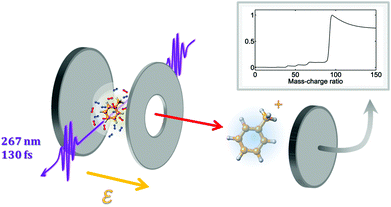Detection limits of organic compounds achievable with intense, short-pulse lasers†
Abstract
Many organic molecules have strong absorption bands which can be accessed by ultraviolet short pulse lasers to produce efficient ionization. This resonant multiphoton ionization scheme has already been exploited as an ionization source in time-of-flight mass spectrometers used for environmental trace analysis. In the present work we quantify the ultimate potential of this technique by measuring absolute ion yields produced from the interaction of 267 nm femtosecond laser pulses with the organic molecules indole and toluene, and gases Xe, N2 and O2. Using multiphoton ionization cross sections extracted from these results, we show that the laser pulse parameters required for real-time detection of aromatic molecules at concentrations of one part per trillion in air and a limit of detection of a few attomoles are achievable with presently available commercial laser systems. The potential applications for the analysis of human breath, blood and tissue samples are discussed.

- This article is part of the themed collection: Analytical Sciences in the UK

 Please wait while we load your content...
Please wait while we load your content...